#mihrimah sultan daughter of sehzade bayezid
Photo






𝐭𝐡𝐞 𝐠𝐫𝐚𝐧𝐝𝐝𝐚𝐮𝐠𝐡𝐭𝐞𝐫𝐬 𝐨𝐟 𝐒𝐮𝐥𝐞𝐲𝐦𝐚𝐧 𝐭𝐡𝐞 𝐌𝐚𝐠𝐧𝐢𝐟𝐢𝐜𝐞𝐧𝐭
#history#historyedit#ottoman history#suleyman i#nergissah sultan daughter of sehzade mustafa#ayse humasah sultan#humasah sultan daughter of sehzade mehmed#ismihan sultan daughter of selim ii#gevherhan sultan daughter of selim ii#sah sultan daughter of selim ii#mihrimah sultan daughter of sehzade bayezid#hatice sultan daughter of sehzade bayezid#sah sultan daughter of sehzade mustafa#ayse sultan daughter of sehzade bayezid#hanzade sultan daughter of sehzade bayezid#fatma sultan daughter of selim ii#ottomanladiesedit
259 notes
·
View notes
Photo










Magnificent Century Season 3 + Brothers & Sisters
#Muhteşem Yüzyıl#Magnificent Century#mcedit#perioddramaedit#weloveperioddrama#period drama#perioddrama#Muhtesem Yuzyil#wspaniałe stulecie#Hatice Sultan#Mihrimah Sultan#Even In Devotion There Is No Peace#MC S3 + Brothers & Sisters#Help Arrived#Captivating Curves#The Years Pass#The Truth About the Daughter of Ibrahim Pasha#A New Round of Confrontation#Death Trap#Sehzade Bayezid#Sehzade Mehmet#Sehzade Selim#Awkward-Sultana#Sultan Suleiman
104 notes
·
View notes
Text
Sultanate of Women (3/7)
Nurbanu Sultan (c.1525/ 7 December 1583)

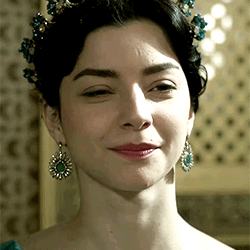
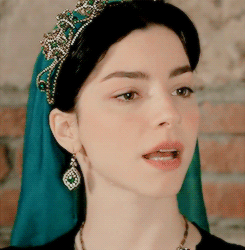
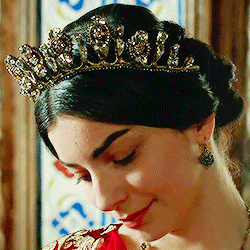
Daughter of Nicolo Venier and Violanta Baffo
Haseki Sultan (Legal Wife) of Sultan Selim II and Valide Sultan of Sultan Murad III
Mother of Sultan Murad III, Sah Sultan, Ismihan Sultan, Gevherhan Sultan, and Fatma Sultan
Grandmother of Sultan Mehmed III, Sehzade Mahmud, Sehzade Mustafa, Sehzade Oman, Sehzade Bayezid, Sehzade Selim, Sehzade Cihangir, Sehzade Abdullah, Sehzade Ahmed, Sehzade Yakub, Sehzade Alemsah, Sehzade Yusuf, Sehzade Hüseyin, Sehzade Korkud, Sehzade Ali, Sehzade Ishak, Sehzade Alaeddin, Sehzade Davud, Sehzade Suleiman, Sehzade Yahya, Hümasah Sultan, Ayse Sultan, Fatma Sultan, Mihrimah Sultan, Rukiye Sultan, Mihriban Sultan, and Fahriye Sultan.
Mother-in-law of Çakırcıbaşı Hasan Pasha, Zal Mahmud Pasha, Sokullu Mehmed Pasha, Kalaylıkoz Ali Pasha, Safiye Sultan, Piyale Pasha, Cerrah Mehmed Pasha, and Kanijeli Siyavuş Pasha
Fun Fact For Newbies: Nurbanu Sultan was born Cecilia Venier-Baffo
47 notes
·
View notes
Text
Marriages /Házasságok
The institution of marriage in the Ottoman Empire has always been an interesting topic. There was a great difference in the general conception of the marriages of sultans, sultanas, şehzades, pashas, and concubines. In this post, I would like to introduce you to the different forms of marriage.

First of all lets discuss the marriages of the sultans. The sultans of the earlier periods of the Ottoman Empire, regularly married women from the ruling dynasty of smaller and larger empires to strengthen their power and gain supporters. This was done, among others, by Murad I (reign: 1362-1389), who married Tamara, the daughter of the Bulgarian Tsar Ivan Alexander, so that he could have the Bulgarians as his supporters. Tamara was one of the greatest beauties of that period and she was specially chosen for him.
His namesake, Murad II (r. 1421-1444 and 1446-1451) married the daughter of a Serbian lord, George Brankovic, Mara Brankovic (1416-1487), who over time became one of the most famous women of her age. Mara's father was loyal to the Ottomans just until the death of Murad II. Mara however, even after Murad's death, decided not to return home but to stay with her adoptive son, Mehmed II (r. 1444-1446 and 1451-1481). She remained with Mehmed and served him as his adviser for the rest of her life. Mehmed II, by the way, is particularly important in the subject of marriage, because he was the one who began the tradition of sultans not to marry. It is interesting because Mehmed himself was married, his wife was choosed by his father Murad II. This is also a good indication of the importance of dynastic marriage during this period. The sultan himself chosed woman to his son, similar to European customs. His choice fell on the daughter of the ruler of the state of Dulkadir, Mükrime. However, their marriage remained childless, since Mehmed showed no interest on Mükrime, even though the wedding celebration lasted for three months! (No other wedding has ever been celebrated for so long.)
Marriages between sultans and noble women thus ceased during the reign of Mehmed II (r. 1444-1446 and 1451-1481). The reason for this was simple. After the occupation of Constantinople, the Ottoman Empire became strong and was more troubled by a noble relative than helped by them. They no longer needed the support of the ruler dynasty of other countries. This is precisely why it caused such outrage when a narrow hundred years later, Süleyman I (r. 1520-1566) married his enslaved love, Hürrem (⁓1503-1558). Although marriage for the sultans was not forbidden, but it has not been a habit since Mehmed II. In particular, not the marriage with a liberated slave. Süleyman began a new habit with this, as his descendants followed this form of marriage. So did Suleiman's son, Selim II (r.1566-1574), who married his love, Nurbanu (⁓1525-1583), almost immediately after becoming sultan. Seeing this pattern in front of him, their son Murad III (r. 1574-1595) also considered marrying his favorite concubine, but sources do not agree on whether he eventually married Safiye (⁓1550-1620?) or not.
A big turn came during the reign of Osman II (r. 1618-1622) in the field of marriages. Osman ascended the throne as a young boy, and as an orphan. His mother died when he was a child, so no one was behind him when he ascended the throne. Osman desperately sought to gain supporters for himself (as did the sultans of the very early period of the Ottoman Empire), so he married the daughter of Seyhülislam Efendi, Akile (1607-1638). Unfortunately, even his marriage couldn't rescu Osman, who was eventually executed during a Janissary rebellion. After Osman, the crazy Ibrahim I (r.1640-1648) was the one who married extremely. Although he did not marry a noble woman, but a simple concubine, Telli Hümaşah (⁓1630-1672), he he gave her extreme benefits. He made her one of the richest women in the empire, gave her the residence of the Valide Sultan (regardless of whether Ibrahim's mother, Kösem Sultan (⁓1590-1651) was alive!) and ordered her own sisters to serve his wives and he took away all of their property, just to give it to his wife. This extreme case brilliantly closed the marriages of the sultans for a long time in the history of the Ottoman Empire so that it could then be revived in the later periods.
In addition to sultan marriages, it is important to mention sehzades as well. Mehmed II's example, mentioned above, shows well that the marriage of princes was an important part of the daily life of the empire in the early period. II. During Mehmed's reign, however, in addition to the sultans, the marriages of the princes also changed. This practically means that although it was not forbidden by a specific law, but the princes could not marry either a noble woman or a simple concubine. And this custom persisted for centuries. When Süleyman I (r. 1520-1566) created the rank of Haseki, the former was supplemented by the fact that the princes could not even give the rank of Haseki to their concubines! These facts help to clear up a great deal of misunderstanding from the history of the Empire. For example:
Mehmed (1521-1543), the son of Süleyman I, could never marry his own cousin, Esmehan Baharnaz (1525-1559?).
The other sons of Süleyman I, Mustafa (1515-1553) and Bayezid (1525-1562), never had Hasekies, since not even the concubine could have the rank of Haseki who were single consorts of the princes. Thus Nurbanu herself (⁓1525-1583), the beloved concubine of later Selim II (r. 1524-1574), could carry the rank of Haseki only when Selim II ascended the throne.
Furthermore, one of the most important conclusions is that, because of this custom, Ayşe Hafsa (⁓1475-1534) could not be the wedded wife of Selim I (r. 1512-1520) contrary to rumors. Selim was just a prince when he took Hafsa as a consort. And this also highlights that Ayşe Hafsa could not have been a Crimean princess, as the princes could not marry, especially not the women of other dynasties. This is further strengthened by the fact that Bayezid II (r. 1481-1512) (Selim's father) didn't want to see Selim on the throne at all, so he would never allowed him to marry a Crimean princess. The origin of the legend may be that Hafsa may have been given to Selim as a gift from the Crimean dynasty, or perhaps she was a Crimean Tatar by origin.
But what about the sultanas? The sultanas were heavily exploited to strengthen the dynasty (the same as any female members of other dynasties). There have been more extreme periods and more acceptable ones in this era. In any case, in the earliest period of the empire, the sultans gave their daughters as wives to their supporters, and possibly married to neighboring dynasties for peace. A great example of the latter is the daughter of Murad I (r.1362-1389), Nefise Melek Hatun (⁓1363-1402?) whom his father added to the Kahramani ruler at the age of 18 to make peace. However, peace could not be maintained, so for a time Nefise Melek Hatun was placed under house arrest in her homeland along with her sons. Eventually, her situation was resolved and her eldest son was appointed to the throne of Kahraman after the two states managed to reach an agreement. However, these marriages were considered less frequent, it was more common for the sultan to honor the pashas who supported them with the grace that they could marry his daughters and sisters.
But it wasn't just the sultans who could benefit from their own daughters! Although Mehmed II (r. 1444-1446 and 1451-1481) forbade his sons to marry women of influential families, but he did not make stipulation that sehzades could not marry off their own daughters to these influential families. For example, Mehmed II's son, Bayezid (r.1481-1512), made an alliance — later life-saving alliance — with influential pasha by giving his daughters to them. He managed to ascend the throne actually due in large part to this. Later, the princes could not marry off their daughters by their own advantages, precisely in order to avoid such alliances. For example, Süleyman I (r. 1520-1566) was the one who decided to whom he should marry his granddaughters. His sons couldn't influence his decision. It is an interesting observation that he married off the eldest daughter of Mustafa (1515-1553), to a non-influential pasha, while the late Mehmed's (1521-1543) daughter or the daughter of Mihrimah (1522-1574) were married to influential pashas, as well as the later Selim II's daughters. In contrast, the daughters of his traitorous son, Bayezid (1525-1562), were married off almost out of their rank.
It can be seen, then, that the marriages of the sultanas have always been a very important part of the life of the Empire. But there were huge differences in how much these women were exploited. In the earliest periods of the empire, they generally acted in a fair manner, and even a second marriage was often rare for female members of the dynasty. Over time, that number has grown. The daughters of Selim I (r. 1512-1520) so the sisters of Süleyman could even claim a relatively normal number of marriages, such as Hatice Sultan (1491-?) who was married off once or twice, Fatma Sultan (1493-1557) three times, Hafsa Sultan (1500-1538) twice, Gevherhan Sultan (1494-?), Hanim Sehzade Sultan (? -?), Şah-i Huban Sultan (1500-1572) and Beyhan Sultan (1492-1559) were married only once. They had chance to decide how many times they married and after a certain age could live their life in peace. Thus, for example, Şah-i Huban herself decided to retire and did not remarry after her divorce. However, it is important to note that during this period, the sultanas were married off at the generally accepted age of 17-18. By the way, Süleyman was permissive with his daughter also, so Mihrimah (1522-1574) did not remarry after her widowhood.
There was no significant change during the reign of Murad III (r. 1574-1595), he too was explicitly permissive with her sisters (though probably more under pressure of his mother). After her sisters were widowed, they were able to choose their next husbands themselves. Thus, the widow of Sokollu Mehmed Pasha (1505-1579), Esmehan (1545-1585) married to Kalaylikoz Ali Pasha. Regarding Esmehan, it is important to mention that she was already longing for a husband in the same age as her (Sokollu was more than 40 years older than her). So she chosed a very handsome beylerbey, but the man rejected the marriage offer, this is why Esmehan was forced to look for someone else, so she got to her later husband Kalaylikoz Ali. Unfortunately, they weren't able to spent too much time together because barely a year after their wedding, Esmehan died in childbirth with her child. Esmehan’s sister, Şah Sultan (1544-1580), was also able to marry to her true love, Zal Mahmud Pasha. Their love was legendary, even death hit them at once, presumably due to illness. Murad III was less forgiving with his daughters, they too were married two or three times and not to the one they wanted. However, in addition to Murad, their mother, Safiye (⁓1550-1620?), could also play a role in this.
Soon after Murad III (r. 1574-1595) the most extreme period of marriages occurred. His grandson, Ahmed I (r. 1603-1617), married off his daughters at an extremely young age. Before I get into the details, it’s important to understand why he did that. Ahmed ascended the throne at a very young age but he did not serve in a sanjak before, this he did not have any supporters, so he had to quickly chain influential pashas to himself. The best way to do that was through marriage. While other sultans already had more adult daughters when they ascended the throne, Ahmed was childless. Over time, several daughters were born, whom he married off as infants. Of course, this did not mean a practical marriage! The infant girls did not have to live with the pashas, but were allowed to stay in the harem with their mothers, and by no means had to leave the palace until puberty. By then, usually, their husbands had either died a natural death or been executed. However, for these girls, this was not the only extremism in their lives. After the death of their father, a very complicated period ensued, but in the end, with a few detours, their younger brother, Murad IV (r. 1623-1640) came to power, who also needed supporters, so he married off his sisters often: if one of their husbands died, the next came, and so on. Unfortunately even after Murad's death, during the reign of Ibrahim I (1640-1648), they could not find peace because they were forced to remarry. Thus, the daughter of Ahmed I, Ayşe (⁓1608-1657?) may have married at least six times, while Fatma (⁓1606-1670) seven times! At the time of their last marriages, they were already old themselves, Ayşe was already 50 and Fatma was 61 years old. With the death of these sultanas, this extreme period also ended fortunately, so that later the sultanas were later raised around the generally accepted age.
Finally, I would like to say a few words about simple concubines. Although many of us have the image that the concubines who were not lucky enough to become consorts of the sultan, got old and died in the harem. However, this was not the case, especially rarely did any of the concubines grow old in the harem. The concubines were changed regularly, they always borught some new, younger women. So those who had been there for too long and began to age and had no chance of becaming the consort of the sultan, were simply married off. These marriages were a great advantage for both parties. It was a great prestige for an agha, a lower-ranked officer or a pasha to be able to get a wife from the imperial harem. And with this, the concubines were given a chance for a new life, far away from the dark and threatening world of the harem.
Used source: Leslie Peirce - THE IMPERIAL HAREM - Women and Sovereignty in the Ottoman Empire
* * *
A házasság intézménye az Oszmán Birodalomban mindig is egy érdekes téma volt. Nagy volt ugyanis az eltérés az általános felfogásban a szultánok, szultánák, hercegek, pasák és az ágyasok esetében. Ebben a posztban a házasságok különböző formáit szeretném bemutatni nektek.

Először is kezdjük a szultánok házasságaival. Az Oszmán Birodalom korai szultánjai rendszeresen házasodtak kisebb-nagyobb birodalmak uralkodócsaládjából származó asszonyokkal, hogy hatalmukat erősítsék és támogatókat szerezzenek. Így járt el többek között I. Murad (uralkodás 1362-1389) aki elvette Tamarát, a bolgár Ivan Alexander cár lányát (aki a kor egyik legnagyobb szépsége volt), hogy a bolgárokat támogatóként tudhassa maga mellett.
Névrokona, II. Murad (uralkodás 1421-1444 és 1446-1451) egy szerb fejedelem, Brankovic György leányát, Mara Brankovic-ot (1416-1487) vette nőül, aki idővel az egyik leghíresebb asszonya lett korának. Mara apját a frigy csupán II. Murad haláláig kötötte az oszmánokhoz, Mara azonban Murad halála után is úgy döntött, hogy nem tér haza, hanem fogadott fia, II. Mehmed (uralkodás 1444-1446 és 1451-1481) mellett marad és annak tanácsadójaként szolgálta a birodalmat élete végéig. II. Mehmed egyébként különösen fontos a házasság témakörében, ugyanis ő volt az, aki elkezdte azt a tradíciót miszerint egy szultán ne házasodjon. Érdekes, ugyanis maga Mehmed nős volt, feleségét még apja II. Murad választotta ki számára. Ez is jól mutatja, hogy ebben az időszakban milyen fontos volt a dinasztikus házasság. A szultán maga választott asszonyt fiának, hasonlóan az európai szokásokhoz. Választása a Dulkadir állam uralkodójának lányára, Mükrimére esett. Házasságuk azonban gyermektelen maradt, Mehmed nem mutatott érdeklődést arája iránt, pedig az esküvői ünneplés három hónapig tartott! (Soha egyetlen másik esküvőt nem ünnepeltek ilyen hosszan.)
A házasságkötések a szultánok és nemes asszonyok között tehát megszűntek II. Mehmed (uralkodás 1444-1446 és 1451-1481) uralkodása alatt. Ennek oka egyszerű volt. Az Oszmán Birodalom Konstantinápoly elfoglalása után elég erőssé vált és inkább jelentett nekik nyűgöt egy nemesi rokon, mint segítséget. Nem volt már többé szükségük más országok uralkodóinak támogatására. Pontosan ezért keltett olyan nagy felháborodást, amikor szűk száz évvel később I. Szulejmán (uralkodás 1520-1566) feleségül vette rabszolgából lett szerelmét, Hürremet (⁓1503-1558). Bár nem volt tilos a házasság a szultánoknak, azonban II. Mehmed óta ez nem volt szokás. Különösen nem egy felszabadított rabszolga feleségül vétele. Szulejmán egy új szokást kezdett el ezzel, ugyanis leszármazottjai követték ezt a házasodási formát. Így tett Szulejmán után annak fia, II. Szelim (uralkodás 1566-1574), aki szultánná válása után szinte azonnal nőül vette szerelmét, Nurbanut (⁓1525-1583). Ezt a mintát látva maga előtt, fiuk III. Murad (uralkodás 1574-1595) is fontolgatta kedvenc ágyasának feleségül vételét, ám a források nem egyeznek abban, hogy végül valóban nőül vette e Safiyét (⁓1550-1620?) vagy sem.
Nagy fordulat állt be II. Oszmán (uralkodás 1618-1622) uralkodása alatt a házasságkötések terén. Oszmán ugyanis gyermekként került trónra, árván. Anyja még gyermekkorában meghalt, így nem állt mögötte senki trónra lépésekor. Oszmán elkeseredetten igyekezett támogatókat szerezni magának (csakúgy, mint a rég múlt idők szultánjai), ezért feleségül vette a Seyhülislam Efendi leányát, Akilét (1607-1638). Sajnos Oszmánt a frigy sem tudta megmenteni és végül kivégezték egy janicsár lázadás során. Oszmán után az őrült I. Ibrahim (uralkodás 1640-1648) volt a következő, aki extrém házasságot kötött. Ő ugyan nem nemes asszonyt vett nőül, hanem egy egyszerű ágyast, Telli Hümaşaht (⁓1630-1672), azonban extrém juttatásokat adott neki. Őt tette a birodalom egyik leggazdagabb asszonyává, nekiadta a valide szultána lakrészét (függetlenül attól, hogy Ibrahim édesanyja, Kösem (⁓1590-1651) szultána életben volt!), valamint saját vérszerinti lánytestvéreit arra kötelezte, hogy szolgálják feleségét és minden vagyonukat elkobozta, hogy azt is nejének adja. Ez az extrém eset remekül zárta le a szultánok házasságkötéseit hosszú időre az Oszmán Birodalom történetében, hogy aztán a későbbi időszakban újraéledhessen.
A szultáni házasságkötések mellett fontos, hogy a hercegeket is megemlítsük. Mint II. Mehmed fentebbi példája jól mutatja, a hercegek kiházasítása fontos részét képezte a birodalom mindennapjainak a korai időszakban. II. Mehmed uralkodása alatt azonban a szultánok mellett a hercegek házasodási szokásai is megváltoztak. Ez gyakorlatilag azt jelenti, hogy bár nem konkrét törvény tiltotta, de a hercegek nem házasodhattak sem nemes asszonnyal, sem egyszerű ágyassal. Ez a szokás pedig bőven kitartott évszázadokig. Amikor I. Szulejmán (uralkodás 1520-1566) megalkotta a Haseki rangot, ez az előbbi még annyival kiegészült, hogy a hercegek még Haseki rangot sem adhattak ágyasaiknak! Az, hogy ezt most már tudjuk, nagyon sok félreértést segít tisztázni a birodalom történetéből. Így például a következőket:
I. Szulejmán fia, Mehmed (1521-1543) sosem vehette nőül saját unokatestvérét Esmehan Baharnazt(1525-1559?).
I. Szulejmán másik fiainak, Mustafának (1515-1553) és Bayezid (1525-1562) hercegeknek sosem volt Hasekije, hiszen még ott sem kaphatott Haseki rangot az ágyas, ahol nem volt mellette senki más a herceg életében. Így maga Nurbanu (⁓1525-1583), a későbbi II. Szelim (uralkodás 1524-1574) egyetlen, szeretett ágyasa sem viselhette a Haseki rangot, csak miután II. Szelim trónra lépett.
Továbbá egyik legfontosabb következtetés, hogy emiatt a szokás miatt nem lehetett Ayşe Hafsa (⁓1475-1534) I. Szelim (uralkodás 1512-1520) hites felesége a híresztelésekkel ellentétben. Szelim ugyanis még csak herceg volt, mikor Hafsát maga mellé vette. Ez pedig rávilágít arra is, hogy Ayşe Hafsa nem lehetett Krími hercegnő, hiszen a hercegek nem nősülhettek, különösen nem más dinasztiák asszonyaival. Ezt tovább erősíti, hogy II. Bayezid (uralkodás 1481-1512) (Szelim apja) a legkevésbé sem akarta Szelimet látni a trónon, tehát sohasem engedte volna neki, hogy egy Krími hercegnőt vegyen nőül. A legenda eredete talán az lehet, hogy Hafsa a Krími dinasztia ajándékaként kerülhetett Szelimhez, esetleg krími tatár származású volt.
Na de mi volt a helyzet a szultánákkal? A szultánákat, csakúgy mint más dinasztiák nőtagjait, jócskán kihasználták a dinasztia megerősítésének céljából. Voltak e téren extrémebb időszakok és viszonylag elfogadhatóbbak. Mindenesetre a birodalom legkorábbi időszakától kezdődően a szultánok támogatóikhoz adták nőül leányaikat, esetleg szomszédos dinasztiákba házasították be őket a béke érdekében.
Utóbbira remek példa Nefise Melek Hatun (⁓1363-1402?), I. Murad (uralkodás 1362-1389) leánya, akit 18 éves korában apja hozzáadott a Kahramani uralkodóhoz, hogy békét köthessenek. A békét azonban nem sikerült fenntartani, így egy időre Nefise Melek Hatun háziőrizetbe is került hazájában fiaival együtt. Végül helyzete megoldódott, és legidősebb fiát kinevezték a Kahramani trónra, miután sikerült a két államnak egyezségre jutni. Ezek a házasságok azonban ritkábbnak számítottak, gyakoribb volt, hogy a szultán az őt támogató pasákat tüntette ki azzal a keggyel, hogy nőül vehették leányait, nővéreit.
Na de csak nem csak a szultánok húzhattak hasznot saját lányaikból! Bár II. Mehmed (uralkodás 1444-1446 és 1451-1481) megtiltotta, hogy fiai befolyásos családok asszonyaival házasodjanak, arra nem tett kikötést, hogy a hercegek saját lányaikat kiházasíthatják e befolyásos családok fiaihoz. Így például II. Mehmed fia, Bayezid (uralkodás 1481-1512) úgy kötött – később számára életmentő – szövetséget befolyásos pasákkal, hogy leányait hozzájuk adta. Trónját tulajdonképpen nagyon nagyrészt ennek köszönheti. Később a hercegek nem igazán dönthettek önállóan leányaik kiházasításáról, pont az ilyen szövetségek elkerülése végett. Így például I. Szulejmán (uralkodás 1520-1566) is maga döntötte el, hogy leányunokáit kikhez adja nőül. Érdekes megfigyelés éppen ezért, hogy Musztafa (1515-1553) – akiben saját riválisát látta – leányát nem befolyásos pasához adta feleségül, míg a megboldogult Mehmed (1521-1543) lányát vagy Mihrimah (1522-1574) leányát befolyásos pasákhoz adta nőül csakúgy, mint a későbbi II. Szelim leányait. Ezzel szemben áruló fia, Bayezid (1525-1562) leányait szinte épphogy csak rangjuknak megfelelően házasította ki.
Látható tehát, hogy a szultánák házasságkötései mindig is nagyon fontos részét képezték a birodalom életének. Ám hatalmas különbségek voltak abban, hogy mennyire használták ki ezeket a nőket. A birodalom legkorábbi időszakában általában meglehetősen fair módon jártak el, még a második házasság is gyakran ritka volt a dinasztia nőtagjai számára. Idővel ez a szám egyre bővült. I. Szelim (uralkodás 1512-1520) leányai, Szulejmán testvérei is még viszonylag reális számú házasságot tudhattak magukénak, így Hatice szultána (1491-?) egyszer vagy kétszer, Fatma szultána (1493-1557) háromszor, Hafsa szultána (1500-1538) kétszer, Gevherhan szultána (1494-?), Hanim Sehzade szultána (?-?) és Şah-i Huban szultána (1500-1572), Beyhan szultána (1492-1559) csupán egyszer mentek férjhez. Nekik még volt beleszólásuk abba, hogy hányszor mennek férjhez és egy bizonyos kor után békében élhették özvegye életüket. Így például Şah-i Huban maga döntött visszavonulása mellett és válása után sem házasodott újra. Mindemellett fontos megjegyezni, hogy ebben az időszakban, az általánosan elfogadott 17-18 éves korban adták férjhez a szultánákat. Szulejmán egyébként leányával is megengedő volt, Mihrimah (1522-1574) sem ment férjhez megözvegyülése után.
III. Murad (uralkodás 1574-1595) uralkodása alatt sem állt be jelentős változás, ő is kifejezetten megengedő volt testvéreivel (bár valószínűleg inkább anyja nyomására). Miután testvérei megözvegyültek, maguk választhatták ki következő férjeiket. Így Sokollu Mehmed Pasa (⁓1505-1579) özvegye Esmehan (1545-1585), Kalaylikoz Ali Pasához ment hozzá. Esmehannal kapcsolatban fontos megemlíteni, hogy ő már nagyon vágyott egy korabeli férjre (Sokollu több mint 40 évvel volt idősebb nála), ezért egy nagyon jóképű beglerbéget választott ki, ám a férfi elutasította a házassági ajánlatot, így Esmehan kénytelen volt mást keresni, így jutott el későbbi férjéhez Kalaylikoz Ali-hoz. Sajnos nem adatott meg nekik sok idő együtt, mert alig egy évvel esküvőjüket követően Esmehan belehalt a szülésbe gyermekével együtt. Esmehan testvére, Şah szultána (1544-1580) is igazi szerelmi házasságot köthetett Zal Mahmud Pasával. Szerelmük legendás volt, még a halál is egyszerre érte őket, feltehetőleg betegség következtében. III. Murad lányaival már kevésbé volt elnéző, ők is kétszer-háromszor házasodtak és nem ahhoz, akit ők szerettek volna. Ebben azonban Murad mellett anyjuk, Safiye (⁓1550-1620?) is szerepet játszhatott.
III. Murad (uralkodás 1574-1595) után hamarosan bekövetkezett a legextrémebb periódus a házasodások terén. Unokája, I. Ahmed (uralkodás 1603-1617) ugyanis extrém fiatalon házasította ki leányait. Mielőtt a részletekbe bocsátkoznék, fontos megértenünk a miértet. Ahmed nagyon fiatalon került trónra, mivel nem szolgált szandzsákban, nem voltak támogatói sem, így gyorsan kellett magához láncolni befolyásos pasákat. Ennek legjobb módja a házasság volt. Míg más szultánok trónra lépésükkor már több, felnőtt leánnyal rendelkeztek, addig Ahmed gyermektelen volt. Idővel több leánya is született, akiket sokszor már csecsemőként kiházasított. Ez természetesen nem jelentett gyakorlati házasságot! A csecsemőlányoknak nem kellett a pasákkal élni, hanem a háremben maradhattak anyjukkal, és a pubertás eléréséig semmiképpen nem kellett elhagyniuk a palotát. Addigra pedig általában a férjeik vagy természetes halált haltak vagy kegyvesztetté válva holtan végezték. Azonban ezeknek a lányoknak nem ez volt az egyetlen extrémitás az életükben. Apjuk halála után nagyon zavaros időszak következett, de végül néhány kitérővel gyermeköccsük IV. Murad (uralkodás 1623-1640) került hatalomra, akinek szintén szüksége volt támogatókra, így sokszor házasította ki testvéreit: ha egyik férjük meghalt, jött a következő, és így tovább. Szerencsétlenek még Murad halála után, I. Ibrahim (1640-1648) uralkodása alatt sem lelhettek nyugalomra, mert kénytelenek voltak újabb és újabb házasságokat kötni. Így lehet, hogy I. Ahmed leányai közül Ayşe (⁓1608-1657?) legalább hatszor, Fatma (⁓1606-1670) hétszer ment férjhez! Utolsó házasságkötéseik alkalmával már maguk is idősek voltak, Ayşe már 50 is elmúlt, Fatma pedig 61 éves volt. Ezen szultánák halálával ez az extrém periódus is lezárult szerencsére, így a későbbiekben újra az általánosan elfogadott kor körül adták nőül a szultánákat.
Végezetül szeretnék néhány szót szólni az egyszerű ágyasokról. Bár sokakban él az a kép, hogy azok az ágyasok, akik nem voltak elég szerencsések, hogy a szultán asszonyaivá váljanak a háremben öregedtek meg. Ez azonban nem így volt, kifejezetten ritkán öregedett meg bármelyik ágyas a háremben. Rendszeresen frissítették az ágyasokat, így aki túl régóta volt ott, kezdett idősödni és nem volt rá esély, hogy a szultánhoz kerülhessen, azt egyszerűen kiházasították. Ezek a házasságok mindkét fél számára igen nagy előnyt jelentettek. Egy egy agának, alacsonyabb rangú pasának igen nagy presztízst jelentett, hogy a birodalmi háremből kaphattak maguknak feleséget. A nők pedig esélyt kaptak egy új életre, maguk mögött hagyhatták a hárem sokszor sötét és fenyegető világát.
Források: Leslie Peirce - THE IMPERIAL HAREM - Women and Sovereignty in the Ottoman Empire
#mara brankovic#zal mahmud#hürrem sultan#hürrem#süleyman i#mihrimah sultan#mihrima#sokollu mehmed#sah-i huban
52 notes
·
View notes
Text
The four Haseki and their relationship with beloved Mothers-in-Law

We'll come closer to the end of Kösem sultan and her magnificent story :,(. Now let me present these four ambitious hasekis in different time but lived below the same sky (don’t ask me why I included Ayşe, just keep reading it! ;-) and why I don’t include Hürrem vs Valide Ayşe Hafsa because mainly I forgot their story XP). Hürrem started this "opposing your mother-in-law" continued with Nurbanu to Turhan sultan (only in MY and MYK dear, not historically), but how their stories differ? Let's see...:
Afife Nurbanu Sultan:

Her mother-in-law was Hürrem sultan, Hürrem wanted her to be a smart but obedient daughter-in-law, she became a gozde (favorite) to sehzade Selim (later Selim II). Iirc, Nurbanu's conflict with Hürrem started when Hürrem refused to protect & defend her after she had fight with Hurichihan (Hatice sultan's daughter) & caused her death. Afraid to the consequence of her deed, she threatened Hürrem to show her letter about ordering Nurbanu to kill Suleyman I's other gozde, Nazenin hatun, from this onwards their conflict began. Other factor that driven Nurbanu is her ambition to support Selim to be the successor, next sultan after Suleyman I, especially after she found that Hürrem was supporting her other son, sehzade Bayezid. Her conflict with Hürrem mainly to prevent and foiled her to support Beyazid. Even after Hurrem's death, Nurbanu was still occupied with Beyazid's remaining supporters (including Mihrimah & Rustem->though Rustem would betray later via Gracia Mendes' seduction (LOL)).
Mahpeyker Kösem Sultan:
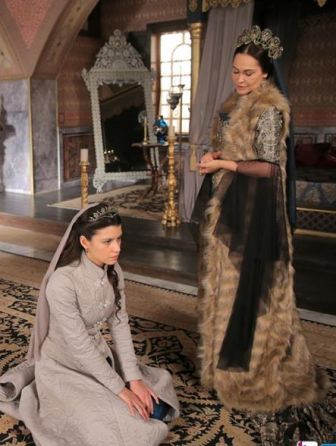
Her actual mother-in-law was Handan sultan, but her nemesis (in the show) was Safiye sultan, Handan's mother-in-law & the grandmother of Kosem's spouse Ahmed I. Similar with Hürrem, Safiye intended to present Kösem to Ahmed and use her to influence & control his power. Their conflict started when Safiye, unable to control Kösem anymore, decided to kill her father. Feeling betrayed, Kösem decided to avenge her father's death (while being a heroine too) by leading Safiye's daughter, Fahriye sultan to her death. Safiye repaid it with Yasemin hatun (Kösem's sister)'s death and Kösem paid it back with Iskender/sehzade Yahya (Safiye's missing son)'s death. Also Kösem being heroine wanted to protect Ahmed and the state from her, especially when Safiye did the coup d'etat, causing chaos in the palace. Not long after, Ahmed died, leaving Kösem with her little children fighting Safiye (and later Halime) alone.
Ayşe Sultan:
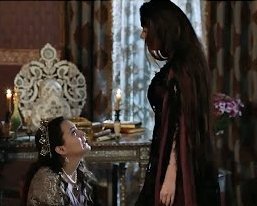
Her mother-in-law was Kösem sultan and her spouse was sultan Murad IV. Like Hürrem and Safiye, Kösem too expected that Ayşe would be an obedient, helpful & easily controlled by her. I think during the very first episode of season 2, there would be a rivalry and conflict between Ayşe and Kösem, how Ayşe said that she wished to support Murad and keep him away from the influence of his mother in ruling the state. Ayşe also said that she refused to follow every Kosem's orders and be obedient to her. Too bad this rivalry concept got thrown out and replaced with her fake rivalry with Farya as Mahidevran 2.0. Ayse's story here would be mainly fanon:
After Kösem's ten years regency, Murad became the sultan officially (I mean, the time when Murad was able to govern the state independently), but with Kösem's influence in the government, viziers & jannisaries, they were already familiar and support her and the people greatly trust her. Murad was struggling to gain the trust and recognition from his people. Everyone (including viziers and jannisaries) still doubted this young sultan's capability to rule, they always compared him to Kösem. Murad wanted to step out from his mother's shadow, he tried to limit Kosem's power and influence, he wanted his mother as valide sultan back to her initial duty, managing the harem. As loyal spouse and his most beloved woman, Ayşe supported Murad and helped him to be able to rule independently by trying to dispel and keep him away from his mother's influence, she also managed to seek the support from the people including some viziers. Ayşe chose to be a good wife and queen/haseki who supported her spouse the sultan in government rather than being used and controlled by his mother. Thus her conflict with Kösem sultan began. Besides her conflict with Kösem, Ayşe also had her own problem, she was struggling to provide Murad a healthy sehzade who would have his chance to survive adulthood and become the heir for Murad's throne. Murad's relationship with his mother was gradually strained. Seeing her son's insubordination to her, Kösem decided to get rid of Ayşe as the mastermind of the destruction of their family relationships. Their rivalry was fierce until Murad's death came. Ayşe who had lost her greatest support (and love) Murad and lost her sehzade who could be made an heir, lost her power, influence and purpose completely. She was immediately removed by Kösem and sent away to live in the Old Palace.
Turhan Hatice Sultan:

Her mother-in-law was also Kösem sultan and she was the spouse of Ibrahim I. Turhan had learned all the tales of the powerful sultana in Ottoman and had her own ambition. She saw Kösem as her role model and at the same time she wanted to be like her. Kösem still expected her to be easily controlled and obedient to her but Turhan thought that being obedient and passive won't make her a powerful figure. She found that to fight her mother-in-law, she had to get her sultan's support. Observing her situation and circumstance, getting the support from her spouse seemed difficult since Ibrahim had numerous gozde that he loved, he even appointed his eight gozde (including her) as his haseki. Turhan could become the Baş Haseki had been a lucky one for her since she had Ibrahim's oldest sehzade Mehmed. The odds of getting support from her spouse are getting smaller as he brought new gozde again and this gozde became his legal wife (Telli Humaşah). Thus, rather than wage an open war to Kösem, she decided to gain the trust for her. By being the closest person to Kösem, she could observe everything, from how Kösem gains her supports to find a chance to overthrow her. During this time, Turhan managed to gain the trust of viziers, but Kösem still had the most influence in jannisaries. Turhan also tried her best to secure her son and protect him as the next heir after Ibrahim's death. When Ibrahim died, Mehmed the oldest sehzade succeeded him. But as long as Kösem still alive, her struggle was not over yet. Kösem who had many experience as regent thought that inexperienced Turhan wasn't competent enough to rule the state, Kösem was preventing her to be in charge of state affairs. Turhan disagreed since she felt entitled as the mother of Mehmed IV. Kösem later went to far by attempting to remove Mehmed and replaced him with sehzade Suleyman (the son of supposedly more obedient haseki Saliha Dilasub). Driven by her will to protect her son's life, Turhan decided to get rid Kösem completely and her men successfully murdered her. Eventually, Turhan became regent and rule the state together with her son. My fanon is that the previous haseki sultan Ayşe wanted have her revenge with Kösem, so she temporarily helped Turhan behind the scene.
Summary:
Many young sultana during their time as queen consort (haseki) had strained relationship with her mother-in-law, the queen dowager (valide sultan), they had similar ambitions but they had their different motivation and situation.
In Nurbanu's case, she was a favorite of Selim II during his sehzade years. There was sehzade Beyazid as threat who challenged Selim's way to be the heir. Being supportive to her spouse, Nurbanu made sure that Selim will success it. Nurbanu's main focused was how Selim would take the throne.
In Kösem's case, she initially was driven by revenge. But later when she found that Ahmed I her spouse's life was also in danger, she fought to protect him. Safiye's failed attempt to control Ahmed drove her to led a coup d'etat. Ahmed with the help of Kösem successfully weakened Safiye's power and influence. But not long after that, Ahmed died and Kösem lost her greatest support. Kösem became alone surrounded with many dangerous snakes especially Safiye and Halime, though in the end she was able to get rid of them.
In Ayse's case, Murad became a sultan who just been deemed worthy to rule by his own. Ayşe helped Murad to gain the trust and to be recognized by his people, she wanted him to get out from Kösem's shadow. Ayşe also had another burden since Murad didn't have an apparent heir yet. In the end Murad died without heir and his brother Ibrahim was the one who succeeded him. Ayşe lost her position and had to spend her life in the Old Palace according to the custom.
In Turhan's case and during her time, Ibrahim I had his eight harem girls as the haseki. Turhan happened to bore him the oldest sehzade Mehmed thus she became the Baş haseki. Turhan had to face her many harem rivals including the greatest threat who was Telli Humaşah, the girl Ibrahim brought and became his legal wife. Turhan was not really loved by Ibrahim (as she was not his most favorite). After Ibrahim's death, Turhan had her power struggle with Kösem sultan. She wanted to be regent ruling independently but her reign always overshadowed by Kösem. Their conflict became worse when Kösem wanted to get rid of Turhan's son and replaced him with her other grandson, thus leading to Kosem's death by Turhan's men hands.
TL;DR
All had their conflict with their MiLs but Nurbanu was haseki of sehzade whereas Kösem, Ayşe and Turhan were haseki of sultans. All supposedly outlived their MiL but canon MYK!Ayşe died before Kösem. Although Kösem had her conflict with her actual MiL Handan, her main nemesis was Safiye sultan, her MiL's MiL (or should I say grandmother-in-law). Nurbanu's spouse Selim I outlived his mother but Ahmed I (Kosem's spouse), Murad IV (Ayse's spouse) and Ibrahim I (Turhan's spouse) died before their mothers (and grandmother in Ahmed's case). Nurbanu, Kösem and Turhan had their surviving sons took his fathers' throne whereas Ayşe didn't. Nurbanu, Kösem and Ayşe were loved and greatly supported by their spouses whereas Turhan was not really (but canon-MYK!Ayşe instead was greatly abused and hated by him), Ibrahim might loved Turhan but she was not his most beloved one. Nurbanu, Kösem and Turhan succeeded in becoming valide sultan and became the most powerful sultana in their respective era whereas only Ayşe who couldn’t make it since she didn’t have a sehzade (the prince), the most important asset for every women as royals.
Conclusion:
Powerful and ambitious women in MY and MYK always expect their daughters-in-law to be the obedient and easily-controlled. Unbeknownst for them, they became the role models of their younger generations. Thus, instead having the obedient DiL, they got their own reflection: the DiL that exactly the same with their younger selves. These DiL won’t easily submit to them just like themselves in their younger days.
Also I wonder when Turhan’s hair color was mentioned as blonde, There is no popular culture that show Turhan with blonde hair. Mahpeyker: Kösem Sultan’s Turhan was brunette and Muhteşem Yüzyıl: Kösem‘s Turhan is dark haired (likely black). I’m sorry with my shitty bad quality editing but I want my Turhan’s blonde XD, I’m not expert.
#valide sultan#haseki sultan#muhtesem yuzyil#muhtesem yuzyil kosem#my thoughts#mother in law vs daughter in law#ottoman empire#hurrem sultan#nurbanu sultan#safiye sultan#kosem sultan#ayse haseki sultan#turhan hatice sultan#haseki ayse sultan's story is mainly fanon#canon!MYK story gave Ayse's story & character injustice#canon!MYK is not historically canon either#respect haseki ayse post#blonde!Turhan
22 notes
·
View notes
Photo







Ottoman Princesses named: Mihrimah
Mihrimah (or Mihrümah) is an Ottoman female name derived from Persian. It is composed of two parts: Mihr- (sun) and -mah (moon). It is variously translated as sun and moon or glory of the moon.
#history#historyedit#ottoman history#mihrimah sultan#mihrimah sultan daughter of sehzade bayezid#mihrimah sultan daughter of murad iii#mihrimah sultan daughter of mustafa iii#mihrimah sultan daughter of mahmud ii#mihrimah selçuk sultan granddaughter of abdulhamid ii#mihrimah sultan granddaughter of mehmed v#ottomanladiesedit#princessesnames
580 notes
·
View notes
Photo



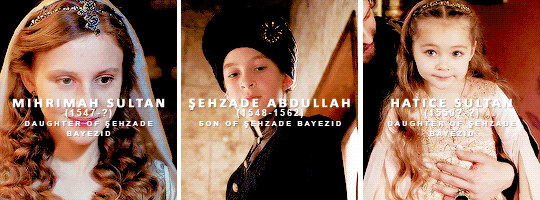




Hürrem Sultan + known grandchildren
#history#historyedit#ottoman history#ottomanladiesedit#ayse humasah hanimsultan#sultanzade osman bey son of mihrimah sultan#humasah sultan daughter of sehzade mehmed#sah sultan daughter of selim ii#ismihan sultan daughter of selim ii#gevherhan sultan daughter of selim ii#fatma sultan daughter of selim ii#mihrimah sultan daughter of sehzade bayezid#ayse sultan daughter of sehzade bayezid#hanzade sultan daughter of sehzade bayezid#hatice sultan daughter of sehzade bayezid#murad iii#long post
1K notes
·
View notes
Photo
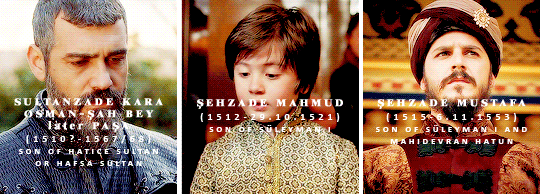

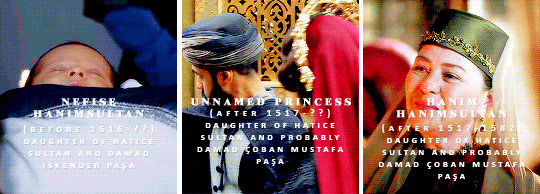

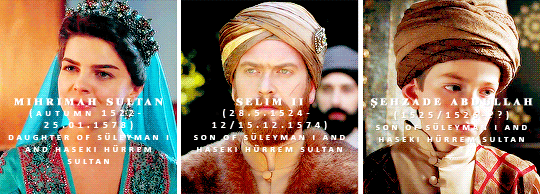

OTTOMANLADIES’ 2ND BIRTHDAY CELEBRATIONS
Ayşe Hafsa Sultan + known grandchildren -- requested by anon
#history#historyedit#ottoman history#ayse hafsa sultan#hatice sultan daughter of selim i#beyhan sultan daughter of selim i#suleyman i#sehzade mustafa son of suleyman i#mihrimah sultan#sehzade mehmed son of suleyman i#selim ii#sehzade bayezid son of suleyman i#sehzade cihangir son of suleyman i#ottomanladiesedit#*requested
620 notes
·
View notes
Note
Hi, I love your content, it's very interesting. I have a question, was there an imperial princess who was married to someone outside the Ottoman Empire?
I hope you understand my question since English is not my first language.
Thank you :D
Of course, most of the time this happened at the beginning and at the end of the empire:
Nefise Melek Hatun, daughter of Murad I Hudavendigar, married Karamânoğlu Alâeddîn Alî Bey. As the name suggests, he was part of the Karamânoğlu family and the ruler of the Karamân Principality. Her sons became rulers of the principality as well, as Mehmed II and Alâeddîn Alî II
her sister Sultan also married a member of the Karamânoğlu family, Turgut Bey
another sister of hers, nameless for now, married Saruhânoğlu Hızır Bey
Oruz (or Uruz) Hatun, daughter of Bayezid I, married a grandson of Timur's, Ebû-Bekr Mîrzâ, and died in Samarkand.
İlaldi Sultan, daughter of Mehmed I, married another member of the Karaman family, Karamânoğlu İbrâhim II Bey, ruler of the Karaman principality, and son of Nefise Melek Hatun's son Mehmed II Bey.
two of her sisters, a nameless one and Ayşe Sultan, married two other members of the Karaman family, Isa Bey and Alaeddin Ali Bey, both sons of Mehmed II Bey and therefore brothers of their sister's husband.
Mihrimah Sultan, granddaughter of Mehmed V, married Prince Nayef bin Abdullah of Jordan
Hatice Hayriye Ayşe Dürrüşehvar Sultan, daughter of Caliph Abdülmecid II, married General Hidayet Ali Han Vala-şan Azam-cah Bahadur Nevvab Mir, Prince of Berar
Fatma Neslişah Sultan, granddaughter of Abdülmecid II and Mehmed VI, married Prince Mehmed Abdül-Mün'im of Egypt.
Her sister Zehra Hanzade married Prince Mehmed Ali İbrahim of Egypt
Their sister Necla Hibetullah married Prince Amr İbrahim of Egypt
#anon#ask post#ask: ottoman history#nefise hatun daughter of murad i#sultan hatun daughter of murad i#unnamed daughter of murad i#oruz hatun daughter of bayezid#ilaldi sultan daughter of mehmed i#unnamed daughter of mehmed i#ayse sultan daughter of mehmed i#mihrimah sultan granddaughter of mehmed v#durrusehvar sultan daughter of abdulmecid ii#fatma neslisah sultan daughter of sehzade omer faruk#hanzade sultan granddaughter of abdulmecid ii#necla hibetullah sultan daughter of abdulmecid ii#Anonymous
16 notes
·
View notes
Text
International Known Queens & Empresses (4/?)
Haseki Hürrem Sultan







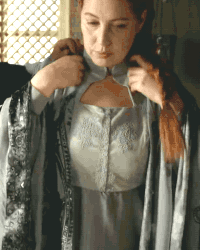


Daughter of Lisovsky (?)
Wife (Haseki Sultan) of Suleiman the Magnificent
Mother of Sehzade Mehmed, Mihrimah Sultan, Sehzade Abdullah, Sultan Selim II, Sehzade Bayezid, and Sehzade Cihangir
Grandmother of Ayse Hümasah Sultan, Sultanzade Osman (Mihrimah), Sultan Murad III, Sehzade Mehmed (Selim), Sehzade Abdullah (Selim), Sehzade Cihangir (Selim), Sehzade Mustafa (Selim), Sehzade Suleiman (Selim), Ismihan Sultan (Selim), Gevherhan Sultan (Selim), Sah Sultan (Selim), Fatma Sultan, Sehzade Orhan, Sehzade Osman (Bayezid), Sehzade Abdullah (Bayezid), Sehzade Mahmud (Bayezid), Mihrümah Sultan (Bayezid), Hatice Sultan (Bayezid), Ayse Sultan (Bayezid), and Hanzade Sultan (Bayezid)
12 notes
·
View notes
Note
Is Mihrimah's relationship with Selim well portrayed in MC? If they show how they hated each other, then it doesn't make sense that Selim would have Mihrimah play the role of Valide Sultan once he's on the throne. And is it true that her, together with Rustem wanted Sehzade Bayezid to be Sultan instead of Selim? Did Hürrem have any preference and backed up that son more than the other?
This is going to come as a surprise but yes, it was well portrayed. What wasn’t well portrayed was how they reconciled so that they could work together when Selim became sultan.
Mihrimah, Rüstem and Hürrem supported Bayezid, apparently not understanding why Süleyman preferred Selim instead: “in Suleyman’s eyes, it was Selim who promised a continuation of the hard-won modus vivendi he had painstakingly achieved with the Hapsburg and Safavid empires. The times had changed.” (Peirce - Empress of the East)
According to Venetian secretary Marcantonio Donini, Mihrimah had sent large amounts of money to Bayezid and when Süleyman caught her, she freely said she was just following her mother’s last wishes, as it was written in her will.
Afterwards, when Mihrimah found out that Bayezid and his sons had been executed, she forbade everyone to show any happiness at the triple wedding of Selim’s daughters. Süleyman, on the other hand, didn’t show any grief but still didn’t stop his daughter.
According to Peirce, Selim, probably drunk, announced that he had never loved Mihrimah, his mother and Rüstem as well. I’ve read the dispatch in Italian and it doesn’t say exactly that: “But maybe Sultan Selim, who never loved this sultana, his mother or his brother-in-lawthe magnificent Rusten bassà either, will be of a different opinion”. Nowhere does Donini say that Selim was drunk or “in the heat of the moment” or anything like that; that he had never loved Mihrimah, Hürrem or Rüstem, is just an assertion of the secretary.
Donini does say, though, that Selim was jealous of Mihrimah’s great wealth.
I guess what MC forgot to show was that they reconciled in the end; Mihrimah helped Selim several times during his sultanate, most famously when the janissaries refused to let him enter Topkapi on his accession. We don’t know when the reconciliation happened, if before Süleyman’s death or only after, but it’s certain that they worked together afterwards.
I think it was very mature of them to put their differences aside and help each other for the good of the empire.
34 notes
·
View notes
Note
hello! you do extremely well research congratulations! i enjoyed your post about sehzade beyazid in particular! do you know what happened to his 4 daughters? did they marry had children e.t.c? also the same about sehzade mustafa did he have any daughters that reached adulthood and also did he marry himself before his execution?
Hello! Thank you so much, I really appreciate it.
I’ve found a recent biography of Suleyman (Yılmaz Öztuna - Kanuni Sultan Süleyman) which talks about the families of his children as well. I haven’t had the opportunity to check it out well, except for the fact he calls Mahidevran “Mahidevran Haseki”…. though he calls Hurrem “Hurrem Haseki Sultan” so I don’t know. You’d think a recent work means the author used new foundings for his book so let’s see what he says:
Mihrimah Sultan: married Dâmâd Muzaffer Paşa, who died in 1593. He was Governor of Bağdâd, Governor of Şehr-i Zor, Governor of Kıbrıs, and he was appointed Governor of Lûristân 1592, a year before his death.
Hatice Sultan: no information
Ayşe Sultan: married Dâmâd Eretnaoğlu Hoca ‘Alî Paşa and had a son, Sultanzade Mehmed Bey
Hanzade Sultan: no information
I doubt Mustafa got married before he died. He was a prince and in the 16th century princes didn’t contract marriages anymore, only slave concubines. Yılmaz Öztuna says his concubine was one Fulane Hatun, a Crimean slave who was born in 1525 (he says Mehmed’s concubine was called Fulane as well, though, so I don’t know. Of course concubines with the same names exist but it seems fishy to me; he also says that one of Suleyman’s concubines was called Fulane and one daughter of his as well!! Just how many Fulanes were there in that family?). His children were:
Mehmed: drowned in Bursa on 10 September 1553 at 7 years old
Ahmed: died in 1552.
Şah Sultan: married Dâmâd ‘Abdülkerîm Ağa on the same day Selim’s daughters got married, 1 August 1562. He was the Janissaries Ağa up until 1564. He supposedly died in or around 1580. Şah Sultan died on 2 October 1577, at 27 years old. Alderson gives this date of death to an unnamed daughter who was married to one Mahmud, without titles.
Nergis-Şah Sultan: born in 1536, she married Dâmâd Cenâbî Ahmed Paşa who died in 1562. He was Governor of Kütahya for 20 years.
On the other hand, Alderson only lists three children (he also wrote his book in 1956, though)
Mehmed (or Murad), executed in October 1553
Şah Sultan, who was married to one Hasan Ağa
an unnamed daughter, who died on 2 October 1577, married to one Mahmud
I don’t know what Yılmaz Öztuna’s sources are because his book has no notes section (or at least, my copy doesn’t?). I’ve tried to look on the internet for some confirmation/more info from other historians but I couldn’t find anything. Especially about the princesses, who obviously weren’t executed with their fathers. They seem like ghosts.
I’d like to point out something before I post this ask. I’ve seen people claim on the internet that Mustafa’s concubines (or Bayezid’s) were called X Haseki or X Haseki Sultan but those are titles reserved for the sultan’s concubines. Princes didn’t have Haseki Sultans. Nurbanu was a Hatun until Selim elevated her to the Haseki Sultan status after he succeeded his father (maybe when he married her?)
#anon#ask post#ask: ottoman history#sehzade mustafa son of suleyman i#sehzade bayezid son of suleyman i#i'm so sorry this is so long
19 notes
·
View notes